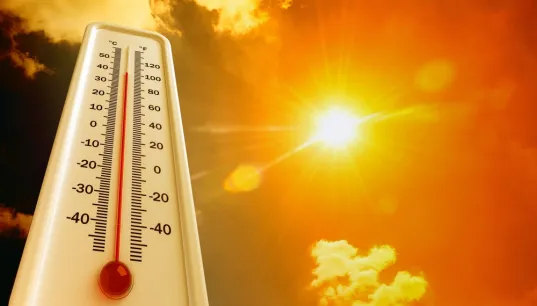When Cities Overheat: Who’s Liable for the Urban Heat Island Effect?

Injured?
As summer temperatures rise, cities across the country are becoming heat traps. Concrete, asphalt, and glass absorb the sun's energy and radiate it back throughout the day and night, creating what is known as the Urban Heat Island (UHI) effect. It's why walking through a downtown street can feel 10 to 20 degrees hotter than a nearby park.
But when this heat becomes dangerous, leading to heatstroke, serious health issues, or even death, who, if anyone, is responsible?
Let’s break down what the Urban Heat Island effect is, why it matters, and when it might go from a climate issue to a legal one.
What Is the Urban Heat Island Effect?
The UHI effect happens when urban environments absorb and retain more heat than surrounding rural areas. Contributing factors include:
- Large amounts of dark, heat-absorbing surfaces like asphalt and rooftops
- Lack of trees, green space, or shade
- Poor building design that traps heat
- Dense traffic and heat-generating infrastructure
- Limited airflow due to the crowded building placement
In cities, this isn’t just an inconvenience; it can be life-threatening, especially during heatwaves. Studies have shown that low-income neighborhoods often experience the worst of this effect due to historic disinvestment in green infrastructure.
When Heat Turns Harmful: Potential Liability
Extreme urban heat may lead to deaths in public housing, schoolyards without shade, and outdoor job sites without proper safety measures. And while climate change is a global issue, some local risks stem from decisions made, or ignored, by those in power.
In certain cases, legal liability may arise when:
- Landlords fail to provide adequate cooling or ventilation
- Cities neglect tree canopy or shade in at-risk neighborhoods
- Employers force workers to remain outside without breaks or water
- Public facilities (like parks or transit stations) lack safe cooling options despite known risks
- Developers prioritize profits over safety, skipping design features that reduce heat
In short, when people are harmed by extreme heat in cities, and that harm was preventable, there may be legal grounds to seek accountability.
Government and Institutional Responsibility
Many cities are aware of the UHI effect, but awareness alone doesn’t prevent injury. Municipalities and agencies may be held responsible when:
- They ignore environmental studies or warnings
- They underfund cooling resources in public spaces
- They delay implementing heat mitigation strategies (like reflective roofing, shade structures, or tree planting)
Governments are not immune to lawsuits, especially when their negligence leads to foreseeable harm, something that’s increasingly true as heatwaves become more frequent and severe.
What You Can Do If You’ve Been Harmed by Extreme Urban Heat
If you or a loved one suffered a serious heat-related injury in an urban environment, it’s important to:
- Seek medical attention immediately. Heat-related conditions can escalate quickly.
- Document the conditions. Take photos of the area, lack of shade, signage, or malfunctioning equipment (like AC units or water fountains).
- Report the incident. Whether it happened at work, in public housing, or in a city facility, file a report if possible.
- Talk to a lawyer. Liability for heat-related injuries can be complex, especially when public agencies are involved. An experienced attorney can help assess your case.
Fighting for Cooler, Safer Cities
The Urban Heat Island effect isn’t just a climate issue; it’s a public safety issue, and one that disproportionately affects the most vulnerable. Legal pressure is often the only way to hold decision-makers accountable and drive change in how cities prepare for rising temperatures.
At Morgan & Morgan, we believe that everyone deserves safe and livable conditions, regardless of their ZIP code or income level.
Suffered Heat-Related Harm in an Overheated City?
If you were injured due to dangerous heat conditions in public housing, a workplace, or any urban environment, contact Morgan & Morgan. We’re here to help investigate what happened, hold negligent parties accountable, and fight for the justice you deserve.

We've got your back
Injured?
Not sure what to do next?
We'll guide you through everything you need to know.

